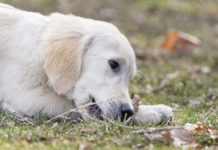
If you think this member of the Toy group is just another little fluffy dog think again! Pomeranians are shattering the dainty fluffy dog myth! In 1996 Ollie Blue Bluster CDX, TD, OA, CGC became the first Pom to earn three performance titles. The first Pomeranian to earn on obedience title was in 1979 when OTCH Uhland’s Crème Puff Delight earned the title a year before CH Nino of Thelcolynn UD, HOF earned a championship and UD title
MACH# Lord Peter of Bristol Court first gathered attention as the first Pom to be a flyball champion and the first Toy of any breed to get a champion title in flyball. He also holds titles in Agility.
Not to be outdone are several Poms who have earned Rally Novice titles, Rhett Butler CDX RA (advanced!) and Janesa’s Tiffany is an Angel earned a Rally Excellent then Rally Advanced Excellent titles. The crowning moment came with another long name.
CH Extane Haleigh’s Fire Dream CD, RN, NA, NAJ, CGC. This is titles not only in conformation but obedience, agility and rally. Who says pretty dogs can’t do anything else?!
These dogs have shown the trainability and intelligence of the Pomeranian and set the bar high. There is no reason for an ill tempered untrained Pomeranian except for lack of time by the owner!
The Pomeranian was bred down from Spitz dogs that served as sled dogs in Iceland and Lapland. The larger ancestors served as an able herding dog with sheep flocks and were about 30 pounds. In 1888 Queen Victoria of England received a gift of a Pom and the trend towards smaller Poms was started. In the late 1800s they became known in the USA and were admitted to the AKC in the Miscellaneous class, not getting their regular classification until 1900.
Today the breed is bred down with more coat than 100 years ago, with a happy, playful and sometimes stubborn nature. This intelligence unchecked means they can easily see themselves as top pack member, a situation at odds with their small physical size which means they not only can become dominant and unpleasant little monsters but they can also provoke a fight with larger dogs and they will lose. As many Pomeranians have shown – they ARE trainable!
By the standard this is a small dog, 3-7 pounds with an ideal range of 4-6 pounds. Their short back should be slightly shorter than from ground to withers. The head should be balanced with the body with a short, straight muzzle.
The crowning glory of the breed is a beautiful coat. Despite their size they do have a double coat – a soft, dense undercoat and a longer, harsher, straight outer coat. This may be heavier around the neck and front of the shoulders, with well feathered legs and long hair on the tail which can be trimmed for neatness.
A wide range of acceptable colors include red, orange, cream, sable, black, brown, blue, white, black and tan and blue merle, among others. The natural attitude should be outgoing, highly intelligent and spirited.
Unless you are keeping a show dog there is no need to keep one in show coat. Regular thorough brushing that coat keeps tangles from becoming matted messes. Regular nail trimming is needed and often times trimming around the anus as well as the heavy fur between their pads can help your Pomeranian be comfortable.
Pay attention to dental care. If you don’t feed a raw diet make sure your Pomeranian’s teeth receive regular care not only to prolong life but prevention of other issues that can result from poor dental care.
For their own protection you should never let your Pom run loose. They simply don’t understand the dangers of cars, larger animals and other things and, compounding the issue is their small size can mean not seeing them until it is too late. Due to small size don’t overfeed – a fat pet is not healthy and can make things much worse.
The breed does have some issues with patella luxation and it is important to understand the legs of toy dogs means jumping from higher distances can result in broken bones. Like many toy dogs they can also be affected by a collapsed trachea. Coat loss issues can happen, hypothyroidism, Cushing’s disease, entropian, Perthes disease and fungus infections can affect individuals in the breed.
Like several small breeds owners should be particularly aware of seizures and hypoglycemia especially in youngsters and more so in the very small ones. These should be fed several times per day to keep the blood sugar at a more steady level and prevent “crashes”. Keeping honey or Karo syrup on hand can help a puppy or dog that does have a crash to help stabilize them faster than you can get to a vet, but don’t rely on just this any time there is a seizure.
Several issues can be addressed with genetic testing. Keep in mind those crossbreeding Pomeranians do not do these testing nor do they know what genetic issues are there that don’t show up. Remember that standard weight of 3-7 pounds. Anyone advertising “teacup” or mini poms is not breeding within that standard and, like other breeds plagued by the ‘teacup’ issue these tiny dogs often have increased health problems because of that size.
Before breeding your Pomeranian be aware of these issues. Be prepared for the possibility of needing a C-section to deliver the pups and if these two things don’t discourage you also be sure she is a superior example of the breed. What will your Pomeranian give to the breed?
This is a breed that can live to their middle teens with good care. These are truly little dogs that need a lifetime commitment. If not socialized and trained they can be barky and will take charge if you don’t. This doesn’t mean treating your Pomeranian cruelly. It means setting rules and not taking a refusal. This can be anything from sleeping on the bed to protecting food – which can escalate to aggression if left unchecked. If it wouldn’t be funny when a Great Dane does it then it’s equally not funny on a Pomeranian.
This training and the grooming requirements are perhaps two of the biggest issues you will have to confront. If you’re a hands on type dog owner who doesn’t mind brushing your dog a few times per week as a “days end” routine then you may well LOVE having a Pom in the home.
If you are not prepared for this and unwilling to adapt to consider the fragile nature and sometimes stubbornness the breed can show, save yourself and your dog much unhappiness and look at another breed. These are wonderful dogs that can accomplish much in the right hands but they are not a breed for everyone. Give an honest evaluation of what your needs and personality is and find a dog breed and an individual that fits that, not the other way around. Expecting the dog to conform to you will more often than not become a battle zone and the dog will lose.
Keep in mind too with an upper size limit there may be wonderful pets available that are just over the size allowed.
Find the right dog for you and prepare to enjoy a pet that is lively and challenging every step of the way! Those are often the best dogs to have!





